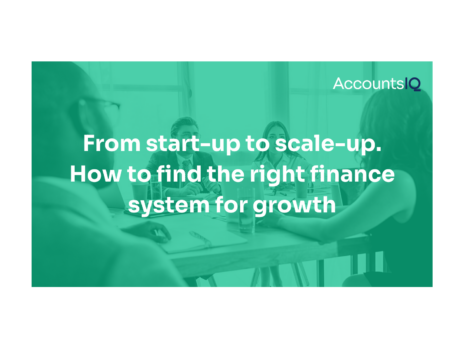
For finance departments, the pursuit of greater levels of digitalisation should be considered in the context of improving the overall health of business, rather than simply introducing new technology to make processes more efficient.
However, because the finance function is so critical to every aspect of the business, from generating forecasts to supporting strategic decision-making and performance, many finance directors (FDs) struggle to lay the groundwork for digitalisation; mainly because they fear potentially damaging interruptions to business.
According to a 2021 study by Ernst & Young (EY), 92% of FDs surveyed across a range of industries have started their digital transformation journey, but only 11% are at an ‘advanced stage’. Only 33% of respondents said they had been able to implement changes at an ‘above par’ level.

For Darren Cran, COO of financial management software specialists AccountsIQ, much of the lack of success is down to FDs placing too much emphasis on simply selecting the latest well-publicised platform or service. That is, being seduced by what’s popular on the market, rather than closely analysing their own needs. FDs often get talked into replacing systems wholesale in the hope of finding a ‘magic bullet’, rather than integrating existing processes into a new framework.
Finance functions, says Cran, are in danger of falling into a trap whereby the level of complexity introduced by their new platform or service does not match up with the training or skill-set of their staff, leaving them in a position which requires a lot of time-wasting manual intervention.
The key to successful digital transformation is to automate only the parts of the financial process that need automating. If an organisation’s finance leadership is not systems experienced, or has become used to the kind of automation not appropriate to their business’s size, then those organisations are in danger of neglecting staff competency.
“The truth is that there is no substitute for the human touch,” Cran says. “A good starting point for businesses is to connect their current functioning software with newer systems which allow them to scale.
“Successful digital transformation is about getting the human and technological aspects of the finance function working in tandem. If you just go straight to the top end of complexity, then you get bogged down and end up creating new problems which hadn’t existed before.”
What can service providers do?
Cran believes there is also a responsibility for providers of platforms and services to identify and address different buyer personas. This, he says, is because FDs operate differently depending on the industry, the size of the business, and whatever part of the finance function may already be working effectively.
“Say a CFO is working with a senior management team and they’re not getting the information they need to run the business. It’s a constant source of frustration for the finance leader having to make excuses when really it’s the system which is at fault because the architecture can’t provide the financial information needed.
“At the same time,” Cran says. “If CFOs haven’t updated their systems, or they’ve inherited something old and bow to pressure to maintain the status quo, then the buck stops with them. Our job is to identify, firstly, exactly where the FD’s pain points are coming from.”
The transformation journey
From the FD’s side, there needs to be more openness to multiple solutions, according to Cran -and a commitment to finance, security, and IT teams working together, sharing responsibility for different areas of expertise, rather than clashing about what systems work best for whom. FDs, says Cran, need to understand that it’s in their interests to work collaboratively.
“Once that shift in mindset has been achieved, the platform provider typically comes in and engages in ‘front loading’. Once we understand what problems your business has, we try to help you match those problems with an appropriate product.
“We also want our clients to understand what’s involved in a transformation project, and what are the risks involved. So we match up the technical requirements through a statement of works and then guide our clients through the process until they’re fully comfortable maintaining it for themselves.”
What this means, Cran says, is that finance leaders should have an open mind as to what digital transformation actually means, consider their objectives carefully, and not just replicate old processes in a new system.
To ensure that the right service finds the right user – that is, senior financier, manager, or collaborator on the platform – AccountsIQ has a digital embedded tool, Pendo which allows for tracking, messaging, assisting new users, or bringing users up to speed if they’re having difficulty with one of the platform’s features.
“Ultimately, what we’re looking to do is provide a combination of digital and human service all the way across the customer lifecycle,” Cran says. “From alignment, sales and onboarding, through our digital academy and certification process.
“After that, we’re of the mindset that feedback is every bit as important. Receiving input from clients so that we can learn about what new problems are emerging, or how we can make the product more efficient.”
What does successful transformation look like?
Aside from integrating the right technologies, changing mindsets within the business, and considering objectives carefully to ensure ongoing success, Cran maintains that digital transformation is ultimately about unlocking agility.
“This is essentially about dismantling the mindset of minimal viable versions of trying to get something to work, bringing it to market quickly, then changing and adapting and going back, and repeating the process ad nauseam,” he says.
“Agility is about being in a constant state of flux or change, moving your business as the market demands… It’s accepting the idea that change is just a normal part of how to do business. FDs tend to be very risk averse, so ultimately, it’s building this way of thinking into the mindset of customers seeking out digital transformation for the long haul.”








